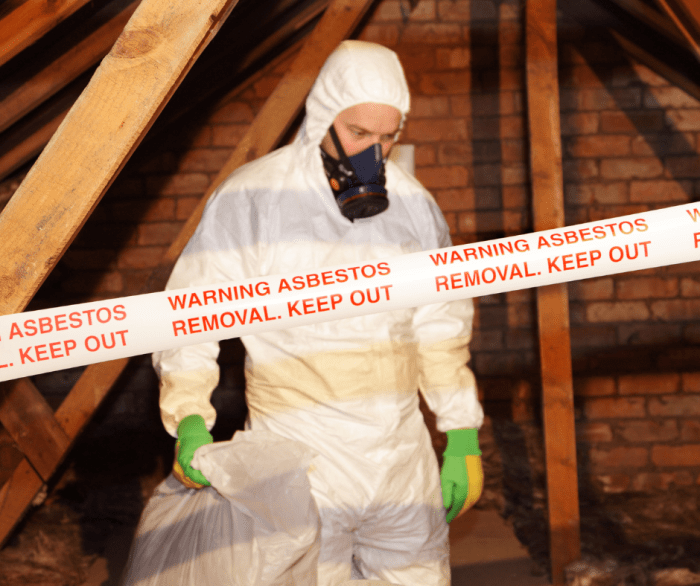Asbestos Legal Claims: What Contractors Should Know Before Starting Work sets the stage for this enthralling narrative, offering readers a glimpse into a story that is rich in detail and brimming with originality from the outset.
This topic delves into the crucial aspects of handling asbestos in the construction industry, shedding light on legal obligations, safety protocols, and potential risks contractors need to be aware of.
Overview of Asbestos Legal Claims

Asbestos legal claims refer to legal actions taken by individuals or groups who have been exposed to asbestos and suffered harm as a result. These claims typically involve seeking compensation for medical expenses, lost wages, and pain and suffering caused by asbestos-related illnesses such as mesothelioma, lung cancer, and asbestosis.
Common Asbestos-Related Legal Issues Faced by Contractors
Contractors may face various legal issues related to asbestos during construction or renovation projects. Some common challenges include:
- Failure to conduct proper asbestos testing before starting work
- Improper removal or disposal of asbestos-containing materials
- Neglecting to provide adequate safety measures for workers exposed to asbestos
- Ignoring regulations related to asbestos handling and abatement
Importance of Understanding Asbestos Laws and Regulations Before Starting Work
It is crucial for contractors to have a comprehensive understanding of asbestos laws and regulations to ensure compliance and protect the health and safety of workers and the general public. Failure to adhere to these laws can result in legal liabilities, financial penalties, and reputational damage.
By being knowledgeable about asbestos regulations, contractors can mitigate risks, prevent legal issues, and create a safer work environment for everyone involved.
Identifying Asbestos in Buildings
Asbestos, a naturally occurring mineral known for its heat resistance and durability, was commonly used in construction materials before its health risks were fully understood. It is crucial for contractors to be able to identify asbestos in buildings to protect the health and safety of workers and occupants.
Methods for Identifying Asbestos in Older Buildings
There are several methods for identifying asbestos in older buildings, including:
- Visual Inspection: Look for materials that may contain asbestos such as insulation, ceiling tiles, and flooring.
- Sampling and Testing: Take samples of suspected materials and send them to a certified laboratory for analysis.
- Asbestos Register: Check if the building has an asbestos register or survey conducted by professionals.
Risks Associated with Asbestos Exposure
Exposure to asbestos fibers can lead to serious health issues such as lung cancer, mesothelioma, and asbestosis. Even minimal exposure to asbestos can pose long-term health risks, highlighting the importance of proper identification and handling.
Importance of Conducting Asbestos Inspections Prior to Construction or Renovation Work
Before starting any construction or renovation work in older buildings, it is crucial to conduct asbestos inspections. The presence of asbestos can significantly impact the project timeline, budget, and most importantly, the health of workers and occupants. Identifying asbestos early on allows for proper abatement measures to be put in place to ensure a safe working environment.
Legal Responsibilities of Contractors
Contractors have crucial legal obligations when it comes to handling asbestos in their work. It is essential to understand and comply with the regulations in place to ensure the safety of workers and the public.
Regulations for Asbestos Handling
- Contractors must follow the Occupational Safety and Health Administration (OSHA) regulations regarding asbestos handling, including proper training for employees, use of protective equipment, and safe removal and disposal practices.
- Contractors must also adhere to the Environmental Protection Agency (EPA) regulations, such as the Asbestos Hazard Emergency Response Act (AHERA) and the National Emission Standards for Hazardous Air Pollutants (NESHAP), which govern asbestos abatement projects and emissions standards.
- State and local regulations may also apply, so contractors need to be aware of and comply with all relevant laws and guidelines.
Consequences of Non-Compliance
- Failure to follow asbestos-related laws and regulations can result in severe penalties, fines, and legal action against the contractor or the company.
- Exposure to asbestos can lead to serious health risks for workers, including lung cancer, mesothelioma, and other respiratory diseases.
- Not complying with regulations can also damage the contractor's reputation and lead to loss of business opportunities in the future.
Handling Asbestos Safely

When dealing with asbestos-containing materials, it is crucial for contractors to follow strict safety procedures to protect themselves and their workers from the dangers of asbestos exposure. Proper training and creating a safe work environment are key elements in handling asbestos safely.
Safety Procedures for Handling Asbestos-Containing Materials
- Wear appropriate personal protective equipment (PPE) such as respirators, disposable coveralls, gloves, and goggles to minimize exposure to asbestos fibers.
- Use wet methods and HEPA-filtered vacuums to keep asbestos fibers from becoming airborne during removal or repair work.
- Properly seal off work areas with plastic sheeting to prevent asbestos fibers from spreading to other parts of the building.
Importance of Proper Training for Workers
- Ensure that all workers receive comprehensive training on asbestos awareness, handling, and safety measures to minimize the risk of exposure.
- Training should cover the identification of asbestos-containing materials, proper handling techniques, and emergency procedures in case of accidental exposure.
- Regular refresher training sessions should be conducted to keep workers updated on the latest safety protocols and regulations.
Creating a Safe Work Environment
- Establish clear work procedures and protocols for handling asbestos to ensure that all workers follow the same safety standards.
- Provide adequate ventilation in work areas to reduce the concentration of asbestos fibers in the air.
- Implement proper waste disposal methods for asbestos-containing materials to prevent contamination of the environment.
Closing Summary

In conclusion, understanding the intricacies of asbestos legal claims is paramount for contractors embarking on any construction project. By being well-versed in the laws, regulations, and safety measures surrounding asbestos, contractors can ensure a smooth and compliant work process.
Questions Often Asked
What are the common asbestos-related legal issues faced by contractors?
Common issues include improper asbestos removal, lack of proper disposal procedures, and failure to conduct required inspections.
What are the consequences of not following asbestos-related laws and regulations?
Contractors may face fines, legal penalties, project delays, health risks to workers, and damage to their reputation.
How can contractors create a safe work environment when dealing with asbestos?
Contractors can ensure safety by providing proper training to workers, using protective gear, implementing containment measures, and following strict disposal protocols.

















